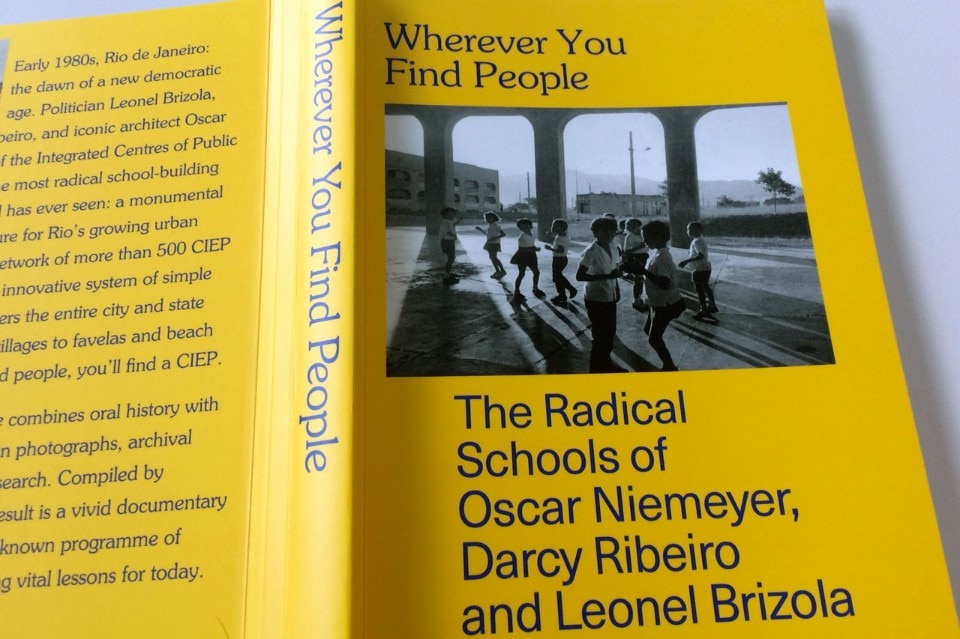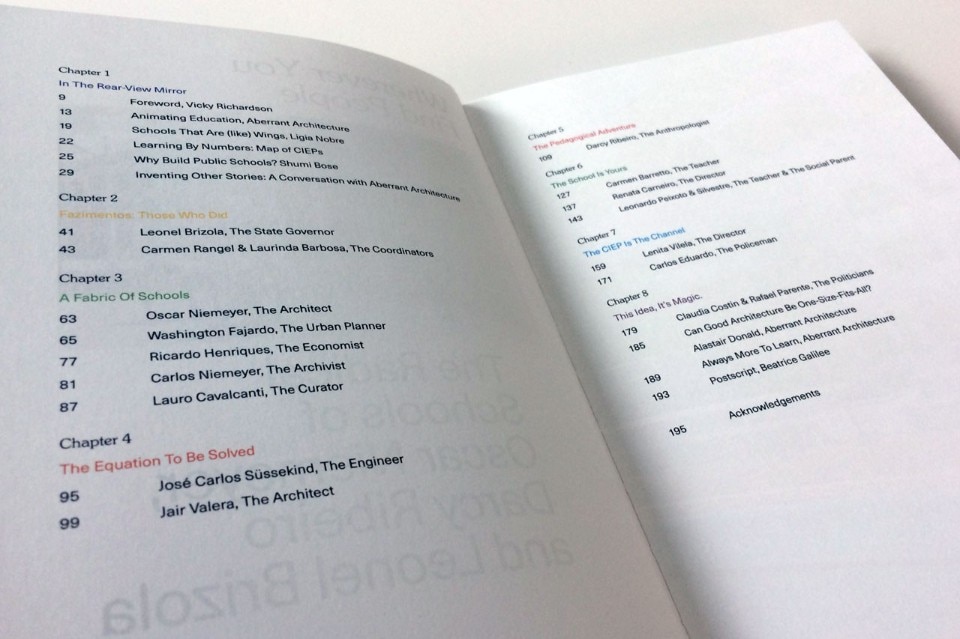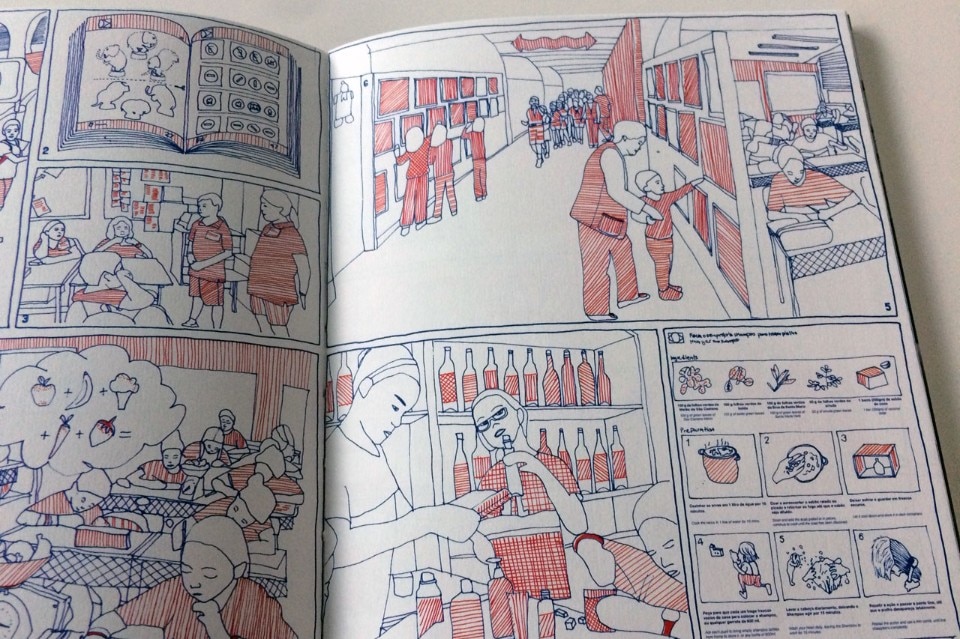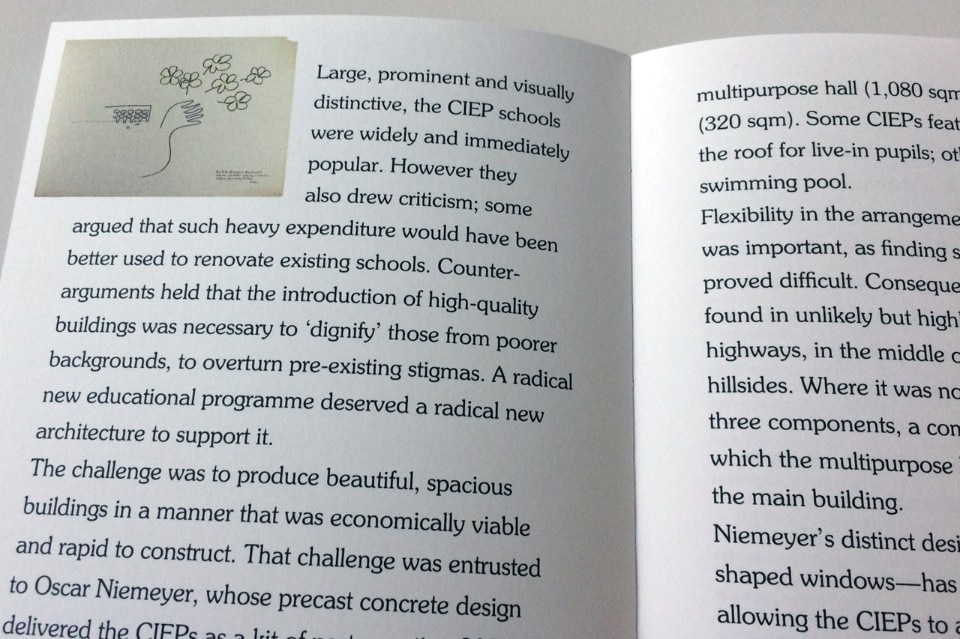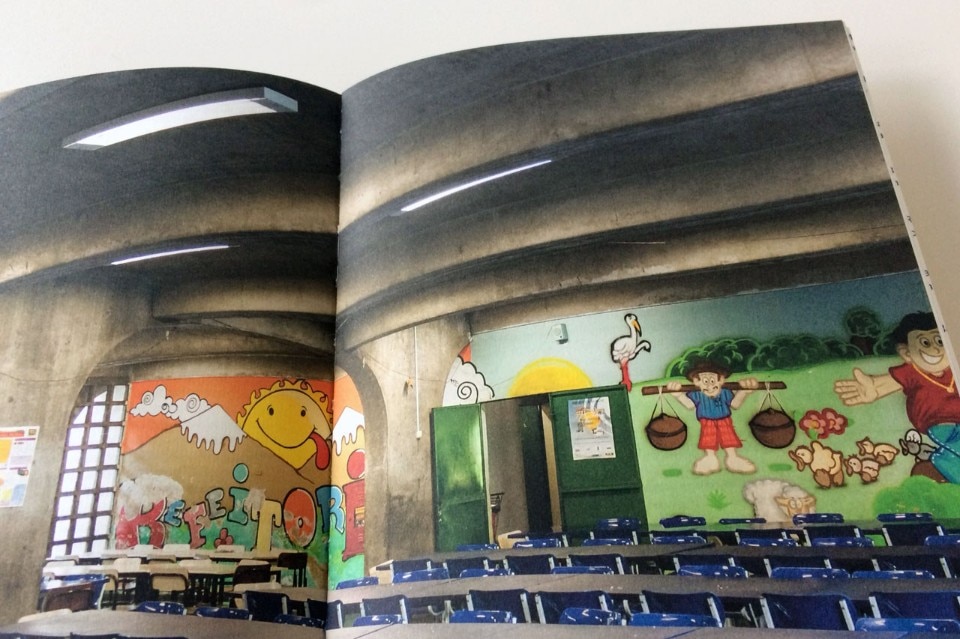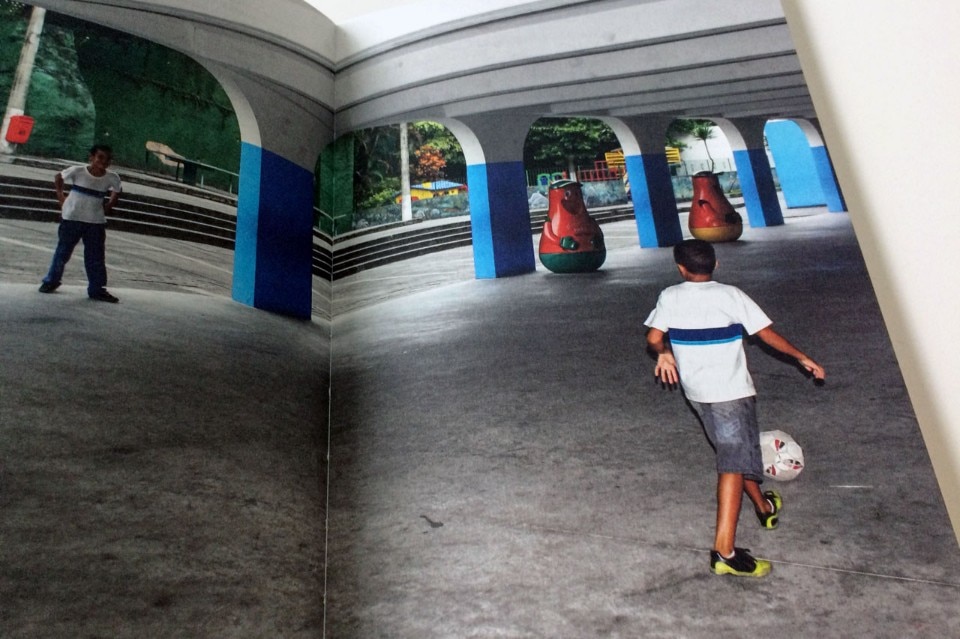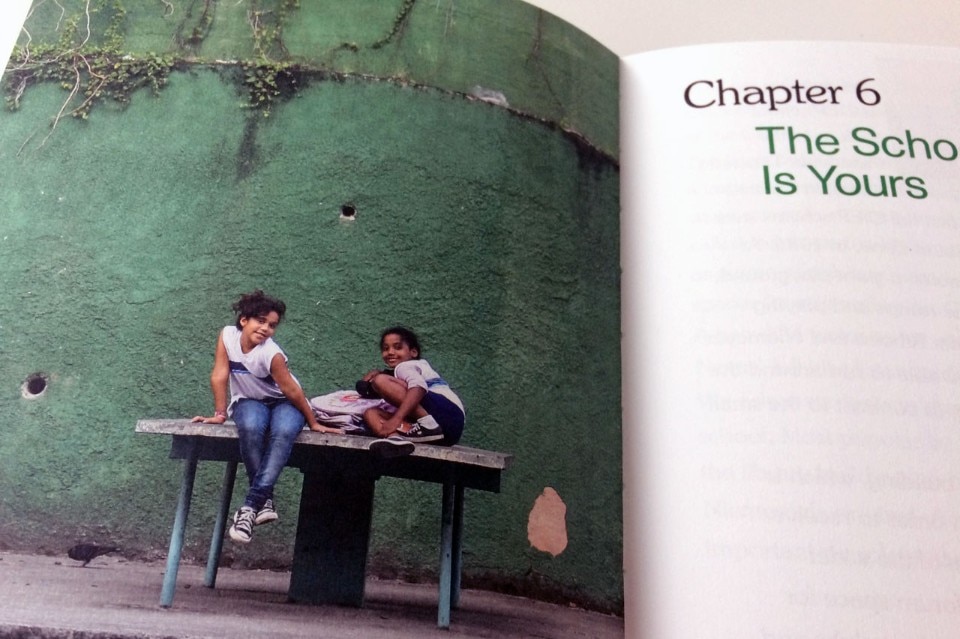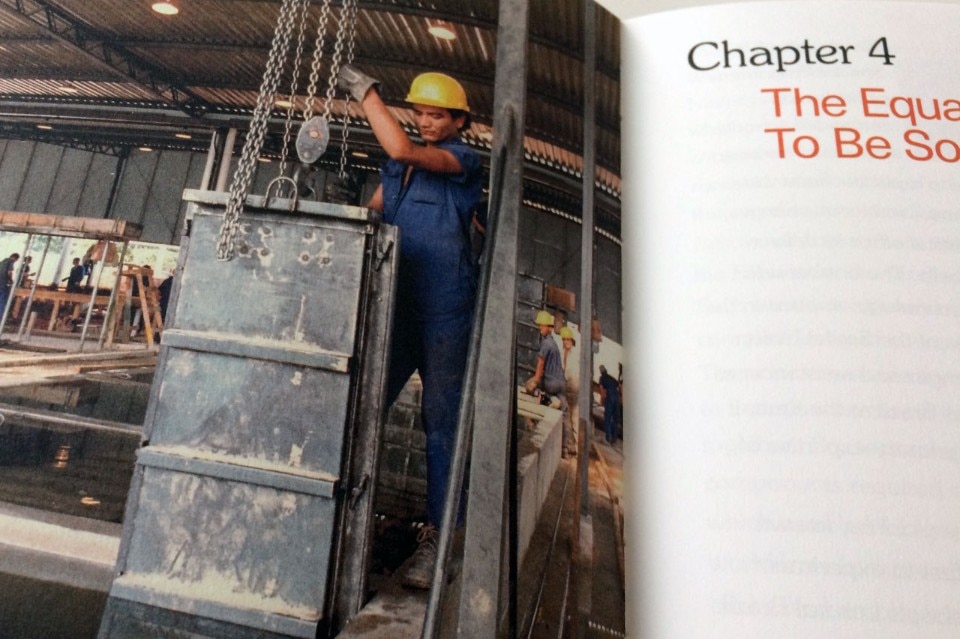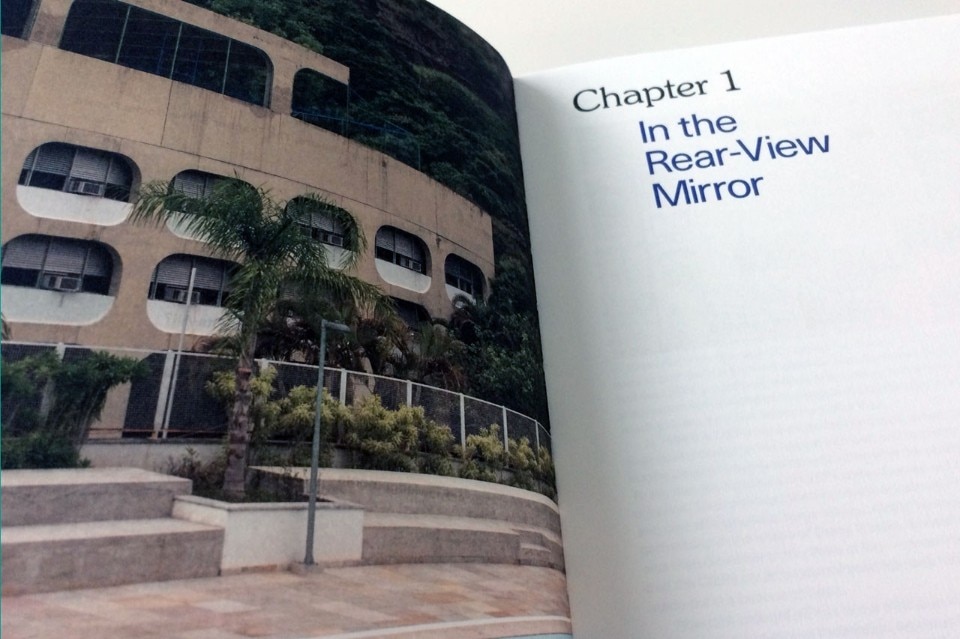The CIEPs, Centros Integrados de Educação Pública (Integrated Centres of Public Education), were meant to solve a problem. The 508 school buildings constructed from 1982 onward in the State of Rio de Janeiro, Brazil were meant to be an alternative answer for the future.
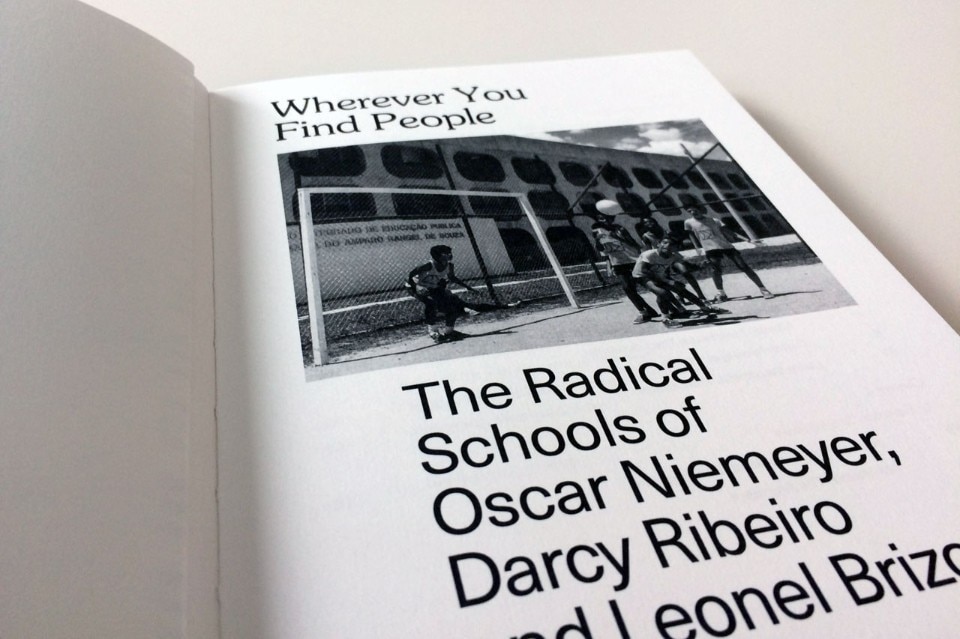
Wherever You Find People – The Radical Schools of Oscar Niemeyer, Darcy Ribeiro and Leonel Brizola tells the story behind the CIEPs by giving an in-depth and detailed account of the historical and sociological motives that led to their construction. The pros and cons of this iconic and socially driven architectural initiative are weighed. Compiled by Aberrant Architecture in London (David Chambers and Kevin Haley), the book is divided into 8 chapters and over 20 conversations/interviews with the designers of the centres. Numerous photographs that have never been published before are featured. Half of the 508 schools were built in the 1980s, and half in the 1990s, during Brizola's second term in office, all in the State of Rio de Janeiro. Another 500 were left unbuilt, but blueprinted by Niemeyer. They are modular constructions built mainly with solid, tough and inexpensive concrete.


